INDUSTRIALIZATION
AND PROGRESSIVISM
(1877-1920)
Immigration, Migration, and Urbanization in America
Watch the video
above and complete the question.
|
Content Statement #10 |
|
Immigration, internal
migration, and urbanization transformed American life. |
|
Content Elaboration |
|
Mass immigration at the
turn of the 20th century made the country more diverse and transformed
American life. Effects of mass immigration included: · filling a demand for workers; · diffusion of ethnic traits into
American culture; · impacting the growth of cities; and
· increased nativist sentiment. Internal migration
contributed to the growth of urban areas. Many people left their farms for
the cities seeking greater job opportunities. The Great Migration was
the mass movement of African Americans who fled the rural South for the urban
North. They sought to escape discrimination and secure better-paying jobs.
The Great Migration helped transform northern cities economically (e.g., as
workers and consumers) and culturally (e.g., art, music, and literature). Urbanization
transformed the physical nature of cities, including: · buildings becoming taller and
tenement buildings providing housing for working families; · increased crime, disease,
overcrowding, poor living conditions, and lack of sanitation services; · the emergence of ethnic
neighborhoods; · improvements in public
transportation; and · a growing middle class that could
easily commute for employment and leisure activities. |
This unit will explore the transformative effects of immigration, internal migration, and urbanization
in the late 19th and early 20th centuries. Discover how these dynamic processes
shaped American life, influenced cultural diversity and reshaped the physical
landscape of cities. Get ready to delve into the stories of immigrants,
migrants, and the evolving urban environment.
Let's Practice
Mass
Immigration and Its Impact
At the turn of the 20th century, mass immigration brought
waves of people from various countries to the United States. This influx of
immigrants had far-reaching effects on American life. One significant impact
was fulfilling the growing demand for workers in industries nationwide.
Immigrants filled vital roles and contributed to the economic growth of the
country.
The Registry
Room at Ellis Island was often crowded.
The
immigrants waited for processing here.
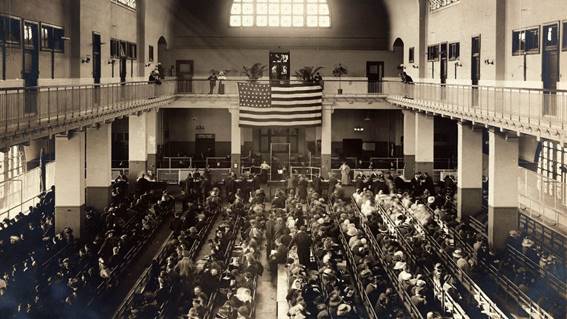
The Miriam and Ira D. Wallach Division of Art, Prints,
and Photographs:
Photography Collection/New York Public Library Digital
Collection
The arrival of diverse immigrant groups also resulted in the
diffusion of ethnic traits into American culture. New customs, languages, and
traditions enriched the nation's social fabric, influencing everything from
food and fashion to music and art. The blending of different cultures
contributed to the unique identity of the United States.
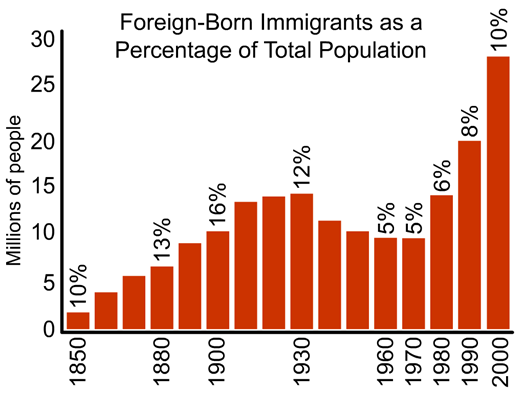
However, the influx of immigrants also fueled nativist
sentiment. Some Americans viewed the newcomers as threatening job opportunities
and cultural traditions. Nativist movements emerged, advocating for restrictive
immigration policies and expressing hostility towards immigrants. This tension
between native-born Americans and immigrants shaped social and political
landscapes during this period.
Let's Practice
Internal
Migration and the Growth of Cities
Internal migration played a crucial role in the transformation of American
society. Many individuals and families left their rural farms and agricultural
communities behind in search of better job opportunities in urban areas. This
internal migration contributed to the rapid growth of cities across the
country.
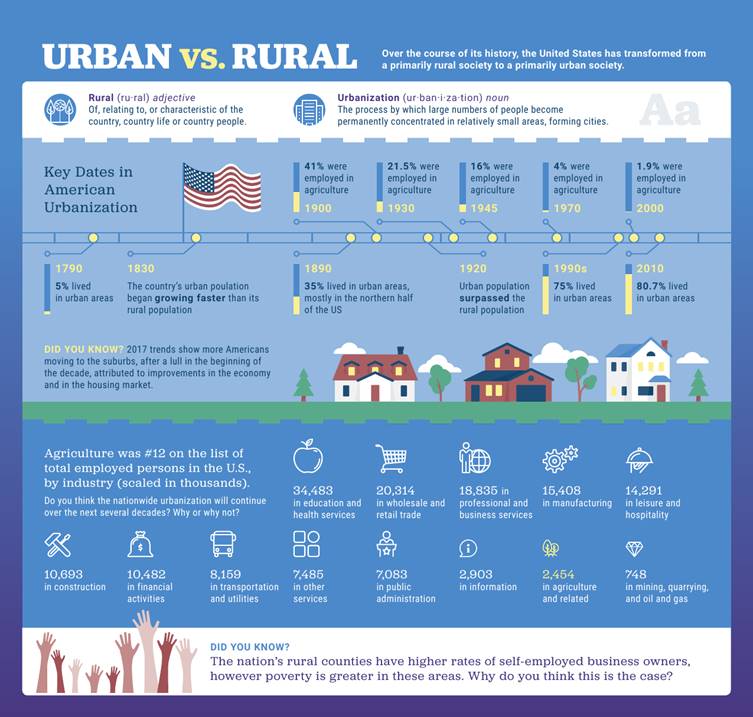
As people flocked to urban centers, cities experienced
significant changes. The physical landscape of cities transformed, with
buildings reaching new heights. Tenement buildings emerged, housing
working-class families, but often characterized by overcrowding and poor living
conditions.
However, urbanization came with its challenges.
Increased crime, disease, and inadequate sanitation services became prevalent
issues. Overcrowding and the lack of proper living conditions posed health
risks for many urban residents. The emergence of ethnic neighborhoods showcased
the diversity of the population and contributed to the cultural mosaic of urban
areas.
Let's Practice
The Great
Migration and African-American Experience
The Great Migration refers to the mass
movement of African Americans from the rural South to urban areas in the North.
Seeking to escape discrimination, racial violence, and limited opportunities in
the South, African Americans migrated in search of better lives and employment
prospects.
The Great Migration profoundly impacted both northern cities
and the African-American community. Economically, African Americans contributed
as workers and consumers, contributing to the growth of industries in the urban
North. Culturally, the migration fostered artistic, musical, and literary
achievements, creating a vibrant cultural scene and showcasing the richness of
African-American contributions to American society.
The Arthurs,
an African American family moving to the urban North from the rural South,
arrived in
Chicago, Illinois, in 1920. The family left their hometown of Paris, Texas,
after two
family members were murdered because of their race in an attack called a
lynching.
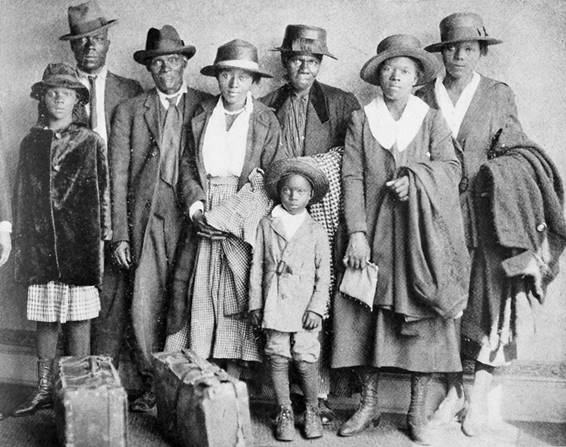
Schomburg Center for Research in Black Culture, Jean
Blackwell Hutson Research and Reference Division,
The New York Public Library (1168439)
Let's Practice
Urbanization
and Its Consequences
Urbanization brought about significant changes in cities'
physical, social, and economic aspects. Buildings grew taller, symbolizing the
urban landscape, while tenement buildings provided housing
for working families in cramped conditions. The rapid growth of cities also led
to increased crime rates and challenges related to disease control and public
health.
Amidst these challenges, improvements in public
transportation facilitated mobility within urban areas. The emergence of ethnic
neighborhoods allowed communities to maintain their cultural identities and
support one another. Additionally, the growing middle class, with the ability
to commute easily, experienced new opportunities for employment and leisure
activities.
The New York
Gothams in 1884. During the Gilded Age, the first professional baseball leagues
formed.
The Gothams
later became the New York Giants and then the San Francisco Giants.
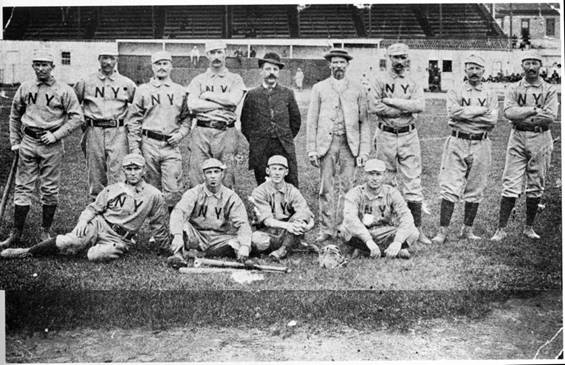
Let's Practice
The processes of immigration, internal migration, and
urbanization had a profound impact on American life during the late 19th and
early 20th centuries. Mass immigration transformed the nation's workforce and
enriched its cultural tapestry. Internal migration fueled the growth of cities
and provided new opportunities for individuals seeking better lives. The Great
Migration reshaped the northern urban landscape and contributed to African-American
cultural achievements. Urbanization brought both advancements and challenges,
with taller buildings, ethnic neighborhoods, and improved transportation
systems, but also issues of overcrowding, crime, and sanitation.